Hecq’s shell-dweller - Neolamprologus hecqui
Scientific name: Neolamprologus hecqui
Common name: Hecq’s shell-dweller
Family: Cichlidae
Usual size in fish tanks: 5 - 8 cm (1.97 - 3.15 inch)
014
Recommended pH range: 7.8 - 9
Recommended water hardness: 10 - 20°N (178.57 - 357.14ppm)
0°C 32°F30°C 86°F
Recommended temperature range: 24 - 27 °C (75.2 - 80.6°F)
The way how these fish reproduce: Spawning
Where the species comes from: Africa
Temperament to its own species: peaceful
Temperament toward other fish species: aggressive to smaller
Usual place in the tank: Bottom levels
Overview
Neolamprologus hecqui (Hecq’s shell-dweller) is a small Tanganyikan cichlid that lives and breeds in empty snail shells on sandy bottoms. Compact, alert, and highly territorial around its shell cluster, it is a classic “shellie” best displayed in a species setup or carefully chosen Lake Tanganyika community.
Care & Tank Setup
- Tank & footprint: A 60–90 cm tank with a generous sand area; height is less important than floor space.
- Substrate & shells: Fine sand (depth 5–7 cm) for digging. Provide 2–3 shells per fish (e.g., Neothauma or escargot shells 4–5 cm opening). Arrange shells in clusters to define territories.
- Water: pH 7.8–9.0, hardness 10–20 °dGH (high KH helpful), temperature 24–27 °C. Strong oxygenation and low nitrate are essential.
- Aquascape: Keep the shell field open; add rock piles at the back/sides to break sight lines and offer retreats.
Diet & Feeding
Carnivorous micro-predator. Offer small, high-quality foods:
- Staples: Fine cichlid granules/micro-pellets and premium flakes.
- Frozen/live: Cyclops, baby brine shrimp, daphnia, finely chopped mysis.
- Feed small portions 2–3× daily; avoid fatty “worm-heavy” diets long term.
Behavior & Compatibility
- Conspecifics: Territorial around shells. Keep as a pair or a small colony (1 male with 2–3 females) with ample shells to diffuse aggression.
- Other fish: Works with compatible Tanganyika species that occupy different niches (e.g., midwater Cyprichromis, small rock-dwellers that ignore shells). Avoid large predators and bottom foragers that disturb the shell bed.
Sexing
Males are larger with slightly longer fins and bolder behavior; females remain smaller and rounder. External sexing can still be subtle—size and behavior near shells are the best clues.
Breeding
A classic shell brooder. Provide a harem (1♂ : 3–4♀) or a well-matched pair. Females lay adhesive eggs deep in the shell; the male guards the territory. At 25–26 °C eggs typically hatch in about 3 days, and fry become free-swimming after another 3–7 days. Feed newly hatched brine shrimp, microworms, or rotifers.
Lifespan
Typically 5–7 years with stable, mineral-rich water and low stress.
Origin
Endemic to Lake Tanganyika (East Africa); sandy littoral zones scattered with snail shells, often near rocky margins.
Short description
A feisty shell-dweller that digs, rearranges sand, and vigorously defends its tiny territory. Success hinges on abundant shells, fine sand, high alkalinity, and careful tankmate choice.
At-a-Glance (Care Box)
- Size: ♂ 6–8 cm; ♀ 4.5–6 cm
- Temperament: Territorial; defensive around shells
- pH: 7.8–9.0 | GH: 10–20 °dGH (high KH preferred)
- Temp: 24–27 °C (75–81 °F)
- Tank: Shell field on fine sand; 2–3 shells per fish
- Diet: Small carnivore foods; cyclops, BBS, fine granules
- Breeding: Shell brooder; 3 d to hatch, fry free-swim in 3–7 d
- Lifespan: 5–7 years
Picture
Bought by aqua-fish.net from jjphoto.dk.


 Thread-finned
Thread-finned 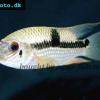 Acara
Acara  Yellow
Yellow  Patrick's
Patrick's  Blue
Blue  Green
Green 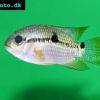 Acara
Acara  White
White  Compressed
Compressed 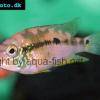 Pastel
Pastel  Midas
Midas  Red
Red  Bluemouth
Bluemouth  False
False 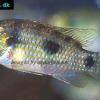 African
African  Agassiz's
Agassiz's  Banded
Banded 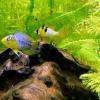 Yellow
Yellow  Cockatoo
Cockatoo  Blue
Blue  Blackstripe
Blackstripe  Highfin
Highfin  Redstripe
Redstripe  Threadfinned
Threadfinned  Macmaster’s
Macmaster’s 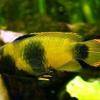 Panda
Panda  Norbert’s
Norbert’s 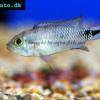 Blue
Blue  Thin-line
Thin-line  Three-striped
Three-striped  Viejita
Viejita 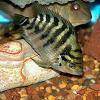 Flier
Flier  Archocentrus
Archocentrus  Convict
Convict  Seven
Seven  Spiny
Spiny  Oscar
Oscar  Sunshine
Sunshine  Chitande
Chitande  Firebird
Firebird  Midnight
Midnight  Lake
Lake  Sunshine
Sunshine  Aulonocara
Aulonocara  Nyasa
Nyasa 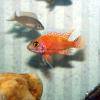 Ruby
Ruby  Grants
Grants  Aulonocranus
Aulonocranus  Chameleon
Chameleon  Benitochromis
Benitochromis  Orinoco
Orinoco  Yellow
Yellow 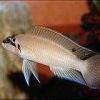 Brichard’s
Brichard’s  Guenther’s
Guenther’s  Southern
Southern  Cichla
Cichla 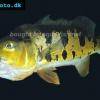 Peacock
Peacock  Chiseltooth
Chiseltooth  Bolivian
Bolivian  Red
Red  Many-pointed
Many-pointed  Jack
Jack  Red
Red  Three
Three 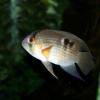 Keyhole
Keyhole  Azureus
Azureus  Red
Red  Jackson’s
Jackson’s  Crenicichla
Crenicichla  Honduran
Honduran  Blue-eye
Blue-eye  Afra
Afra 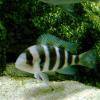 Frontosa
Frontosa  Slender
Slender  Malawi
Malawi  Chequerboard
Chequerboard  Checkerboard
Checkerboard  Malawi
Malawi  Ectodus
Ectodus  Tanganyika
Tanganyika  Canara
Canara  Green
Green  Rostratus
Rostratus  Pearl
Pearl 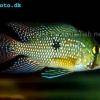 Geophagus
Geophagus  Yellowhump
Yellowhump  Suriname
Suriname  Redhump
Redhump  Red
Red  Dority’s
Dority’s  Argentine
Argentine 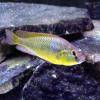 Burton’s
Burton’s  Victoria
Victoria 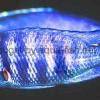 Haplochromis
Haplochromis  Jewel
Jewel  Banded
Banded 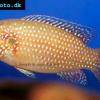 Lifalili
Lifalili  Lowland
Lowland  Texas
Texas  Pantano
Pantano  Severum
Severum  Banded
Banded 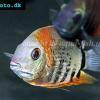 Severum
Severum  Rainbow
Rainbow  Parrot
Parrot  Chocolate
Chocolate  Brown
Brown  Marlieri
Marlieri  Golden
Golden  Striped
Striped  Masked
Masked 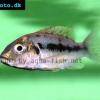 Konye
Konye  Blue
Blue  Trewavas
Trewavas  Electric
Electric  Dwarf
Dwarf  Redbreast
Redbreast  Lamprologus
Lamprologus  Gold
Gold 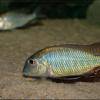 Greenface
Greenface 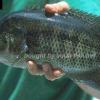 Mayan
Mayan  Aurora
Aurora  Blue
Blue  William’s
William’s 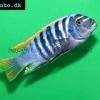 Zebra
Zebra  Malawi
Malawi  Blue
Blue 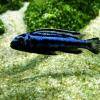 Blue
Blue  Mbuna
Mbuna  Parallel
Parallel  Purple
Purple  Flag
Flag  Bolivian
Bolivian  Ram
Ram  Basket
Basket 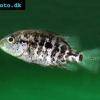 Haitian
Haitian  Zebra
Zebra  Striped
Striped  Neolamprologus
Neolamprologus  Brevis
Brevis  Fairy
Fairy 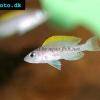 Neolamprologus
Neolamprologus  Cylindricus
Cylindricus  Neolamprologus
Neolamprologus  Lemon
Lemon  Mustax
Mustax  Daffodil
Daffodil  Six-bar
Six-bar  Five-bar
Five-bar  Marbled
Marbled 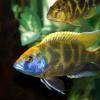 Giraffe
Giraffe  Blue
Blue  Sulphurhead
Sulphurhead  Wolf
Wolf  Jaguar
Jaguar  Blue
Blue  Marakeli
Marakeli  Madagascar
Madagascar  Pinstripe
Pinstripe  Pelmatochromis
Pelmatochromis  Kribensis
Kribensis 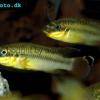 Striped
Striped  Red
Red  Deepwater
Deepwater  Fenestratus
Fenestratus  Nichols’
Nichols’  Southern
Southern  Bumble
Bumble  Demason’s
Demason’s  Slender
Slender  Red
Red  Mbuna
Mbuna  Malawi
Malawi  Kenyi
Kenyi  Powder
Powder  Altum
Altum  Angelfish
Angelfish  Angelfish
Angelfish 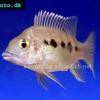 East
East  Juba
Juba  Earth
Earth 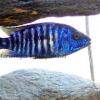 Electric
Electric  Azure
Azure 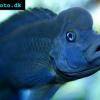 Lionhead
Lionhead  Discus
Discus  Blue
Blue  Red
Red  Zebra
Zebra  Brichard’s
Brichard’s  Blue
Blue  Firemouth
Firemouth  Zebra
Zebra  Yellow
Yellow  Blue
Blue  Dwarf
Dwarf  Blunthead
Blunthead 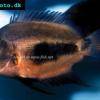 The
The  White
White  Twoband
Twoband  Fenestratus
Fenestratus  Window
Window  Tailbar
Tailbar  Black
Black  Redhead
Redhead 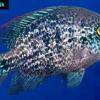 Oaxaca
Oaxaca  Xenotilapia
Xenotilapia